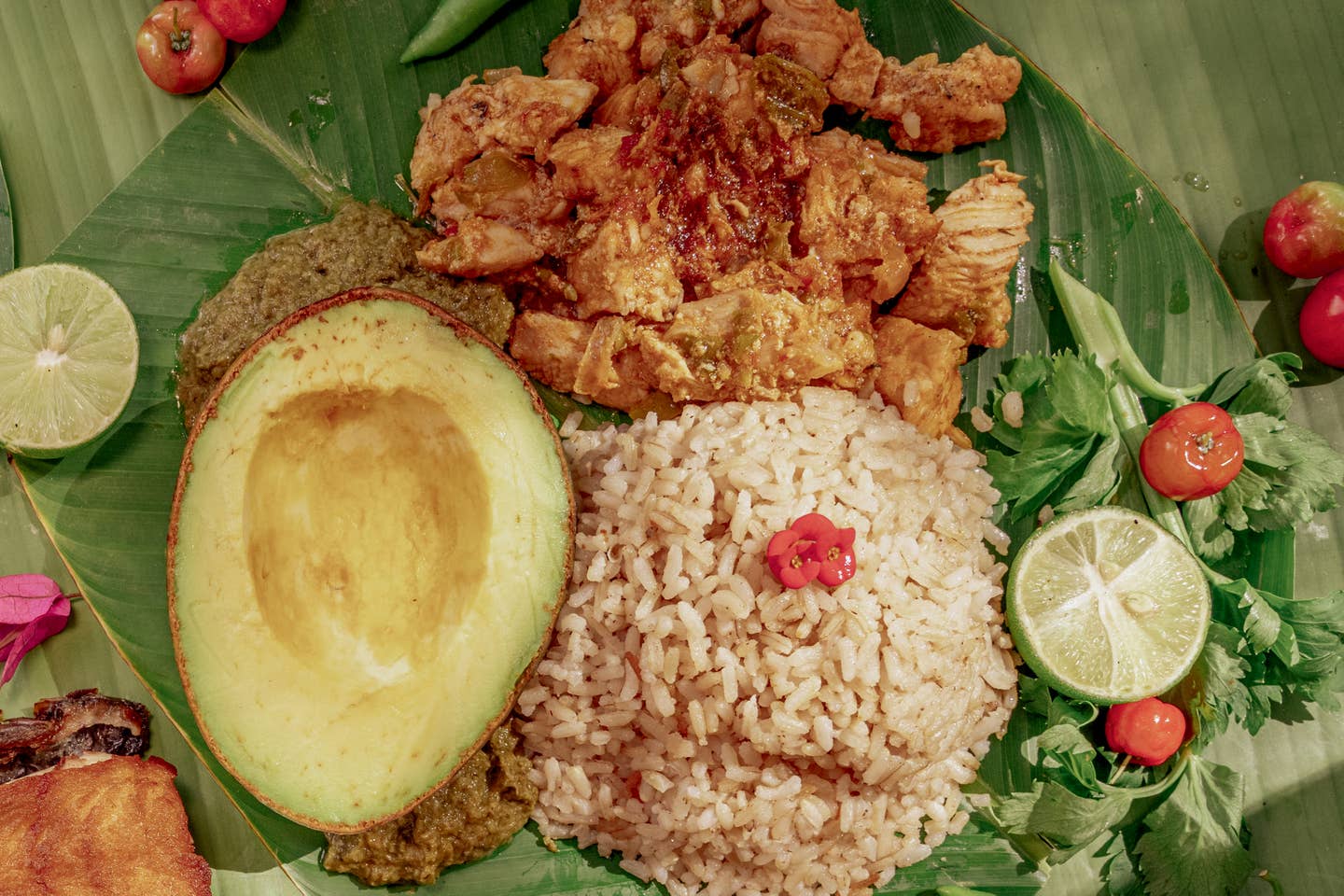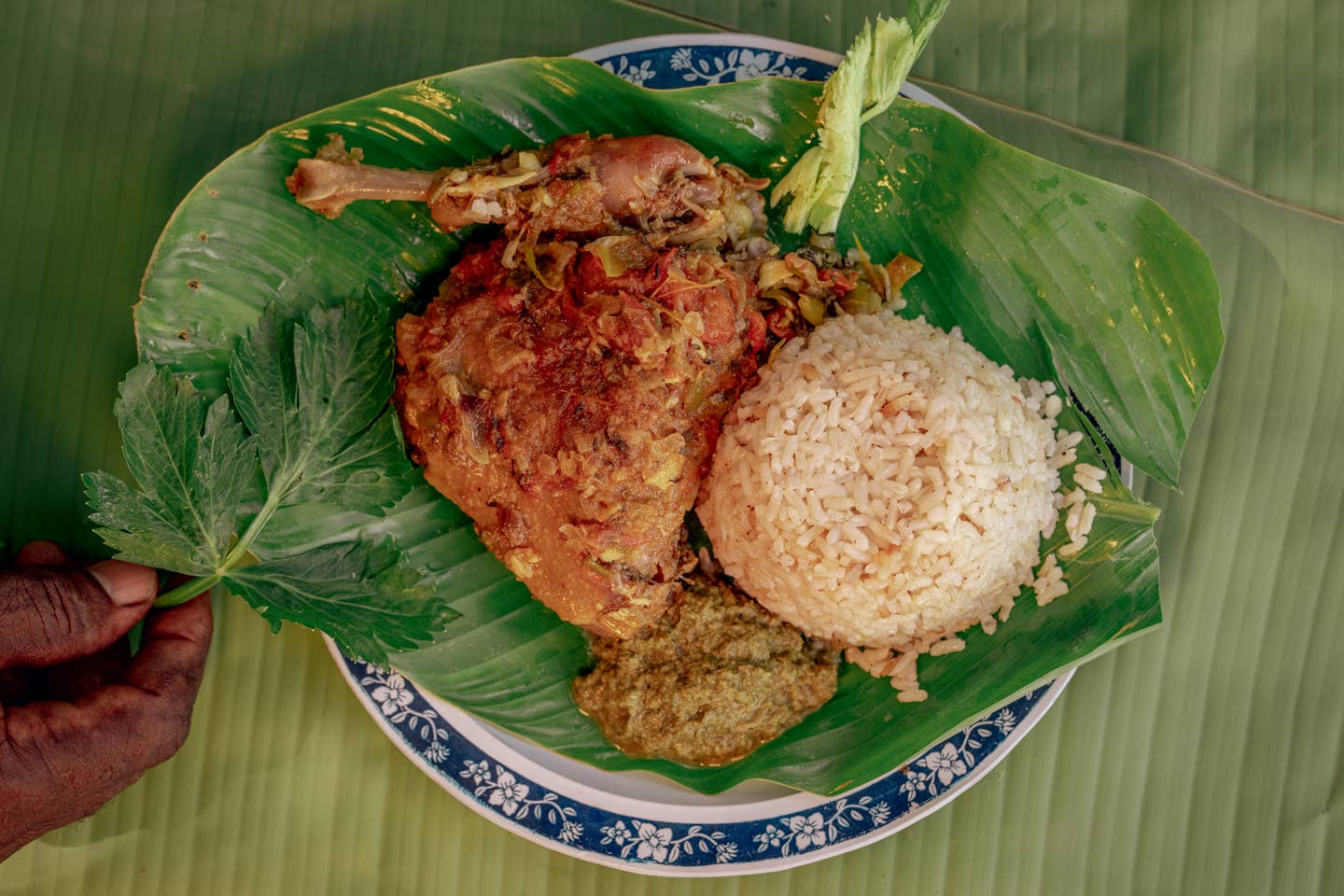Down a gravel pathway in a rural Colombian city, simply over 20 miles from the Caribbean coast, a bunch of African girls donning billowy attire supply up baskets full of sweets: coconut-laden cocadas, chewy caballitos, and the ever-so-sweet popped millet balls generally known as alegría, from the Spanish phrase for “pleasure.” Cloaked within the saturated pink, yellow, and blue of the Colombian flag, the ladies, generally known as palenqueras, make a dwelling right here peddling contemporary fruits and do-it-yourself treats to locals and guests alike. However it’s not simply the palenqueras’ snacks which might be candy; the quiet roads of San Basilio de Palenque are paved with the sweetness of freedom.
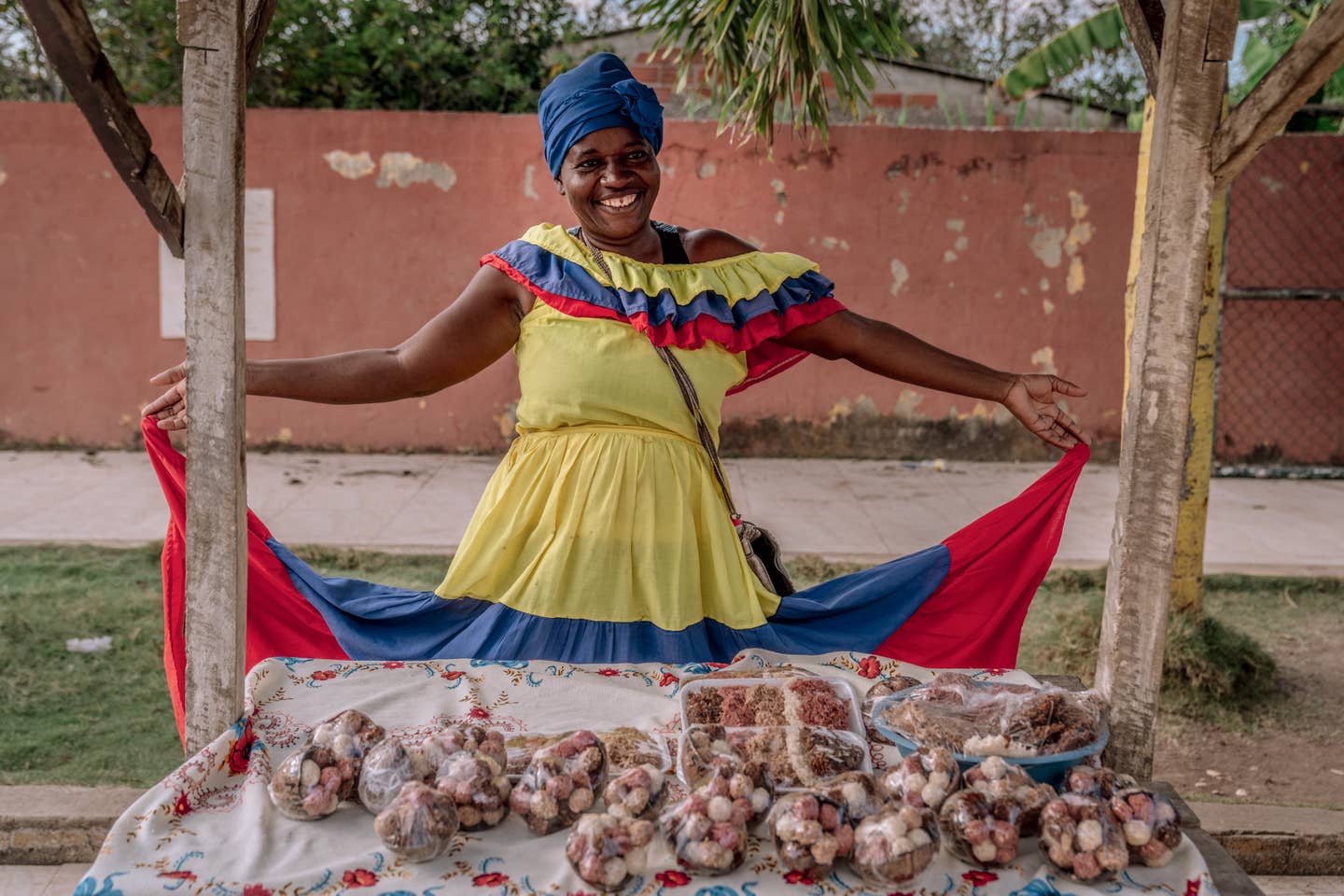
Palenque, as its identify is often shortened, is the primary free African village within the Americas, and descendants of African slaves exist right here in a means that’s international to most different descendants of slaves, myself included: There is no such thing as a police system right here, and by no means has been. As an alternative, locals self-govern, and strategy disputes utilizing locally-trusted practices of forgiveness and battle decision. This ambiance has enabled the neighborhood’s African heritage to flourish properly past the legacy of Colombian enslavement. Elders retain historical medicinal practices, younger musicians revitalize erstwhile music traditions, and residential cooks and cooks protect their generations-old recipes and culinary methods—all rooted in customs and practices introduced over by their enslaved ancestors within the early sixteenth century.
That heritage was instantly evident even earlier than I arrived in Palenque, together with about 10 different Black American vacationers. Roughly 4.7 million Colombians are of African descent, making up just below 10 % of the nation’s inhabitants. In Cartagena, 30 miles or so to the north, their affect is most recognizable on the street meals: Arepas, the favored flatbreads often filled with meat and cheese, are produced from a dough of floor and mashed maize, a standard ingredient for Indigenous and Black Colombians. Amongst distributors doling out papas con huevo y carne (potato balls with eggs and meat) and potato- or meat-stuffed empanadas, the palenqueras, who typically commute north to make more cash in Cartegena’s primary squares, are simply seen of their vibrant colours, promoting the identical sweets I encountered of their storied hometown.
In Palenque, although, that African affect extends far past the meals: It’s an inextricable function of the place itself. As you arrive on the town, you’re welcomed instantly by a placing statue of the liberty fighter Benkos Biohó, a Guinea Bissau–born revolutionary who escaped a Spanish slave port in Cartagena within the sixteenth century and led his individuals to freedom. Settling within the mountainous Montes de María area of the nation, he organized a runaway slave community to assist different enslaved Africans attain their liberation. He was in the end captured and executed in 1621, however his efforts towards freedom weren’t totally in useless: In 1713, after years of failing to take again the settlement, the Spaniards surrendered their assaults, and Palenque successfully grew to become the primary free African village, by decree of the King of Spain. At present, lionized via the brass statue, Biohó extends a single shackled arm, greedy for yet another likelihood to carry one other soul right into a free world.
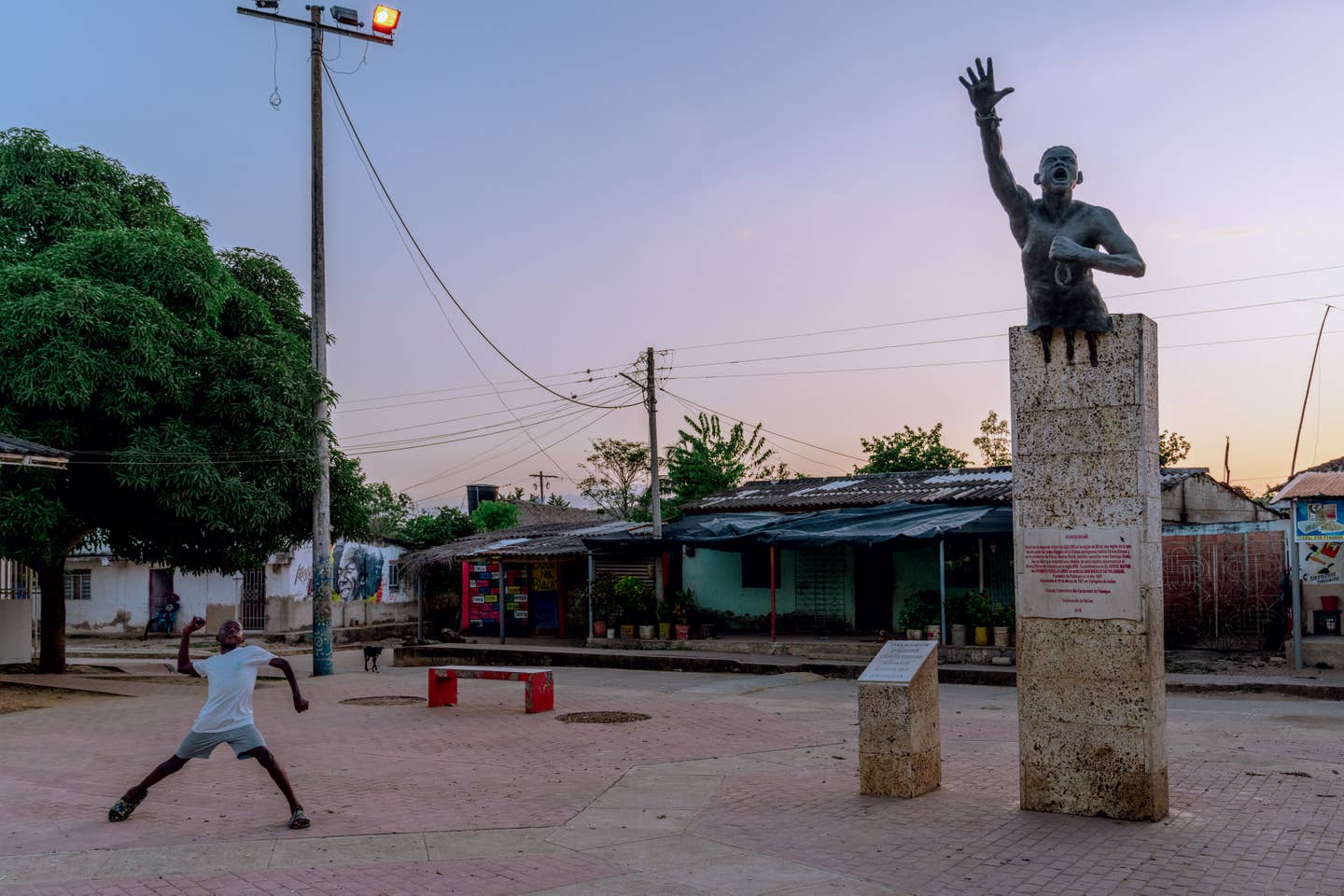
Greater than 300 years after its founding, meals, artwork, and music have turn out to be a few of Palenque’s most distinguished options. Strolling via the gravel roads, songs drift from open home windows, whereas native bands carry out within the streets all through the day. Drum beats and the sounds of rhythmic steps merge with the music because it crescendos and reverberates throughout city. Brightly painted murals adorn storefronts and partitions, many depicting Black girls experiencing the ebbs and flows of life.
As I swipe beads of sweat from my brow, I see a mural displaying a Black lady with phrases inscribed in her braids, an ode to a intelligent trick amongst enslaved African girls who braided maps and directions into their hair to offer key data and escape routes through the transatlantic slave commerce. They’d braid seeds into their hair as properly, which enabled elements like tamarind, bitter melon, kola nut, and the subtly candy melegueta pepper to turn out to be a part of Colombia’s foodways. Elsewhere, a stoic Black lady’s eyes appear to fulfill the tip of the quick street, and a colourful “Black Lives Matter” signal factors to Black individuals’s interconnected, world combat for liberation.
I’m quickly encircled by a bunch of kids, recruiting me into their recreation of tag as we strategy “The Home of Music.” Based by native musical group Kombilesa Mi (which implies “my good friend,” in Palenquero, the Creole language right here), the small museum is residence to a group of regionally particular devices, just like the Cuban-inspired marímbula and huge drums known as buleadors. The band members hope to remodel the area to welcome much more guests, and are actively elevating cash to succeed in their $12,000 purpose. “Music is basically the center and soul of Palenque,” says Blue Apple Seaside hotelier Portia Hart, “so having an establishment like this available for the neighborhood and guests is crucial.”
Palenque’s music historical past features a mixture of traditions introduced over and tailored by enslaved Africans from locations together with Nigeria and Central Africa. In 1927, Cuban influences reached the native music scene, which continued to evolve as extra native musicians drew inspiration from different components of the diaspora. As we stroll to lunch, we’re handled to some music from a neighborhood group that march close to us down the street, wearing a number of the cleanest multicolored quick units within the space, their ebullient lyrics and colourful devices rousing the whole neighborhood.
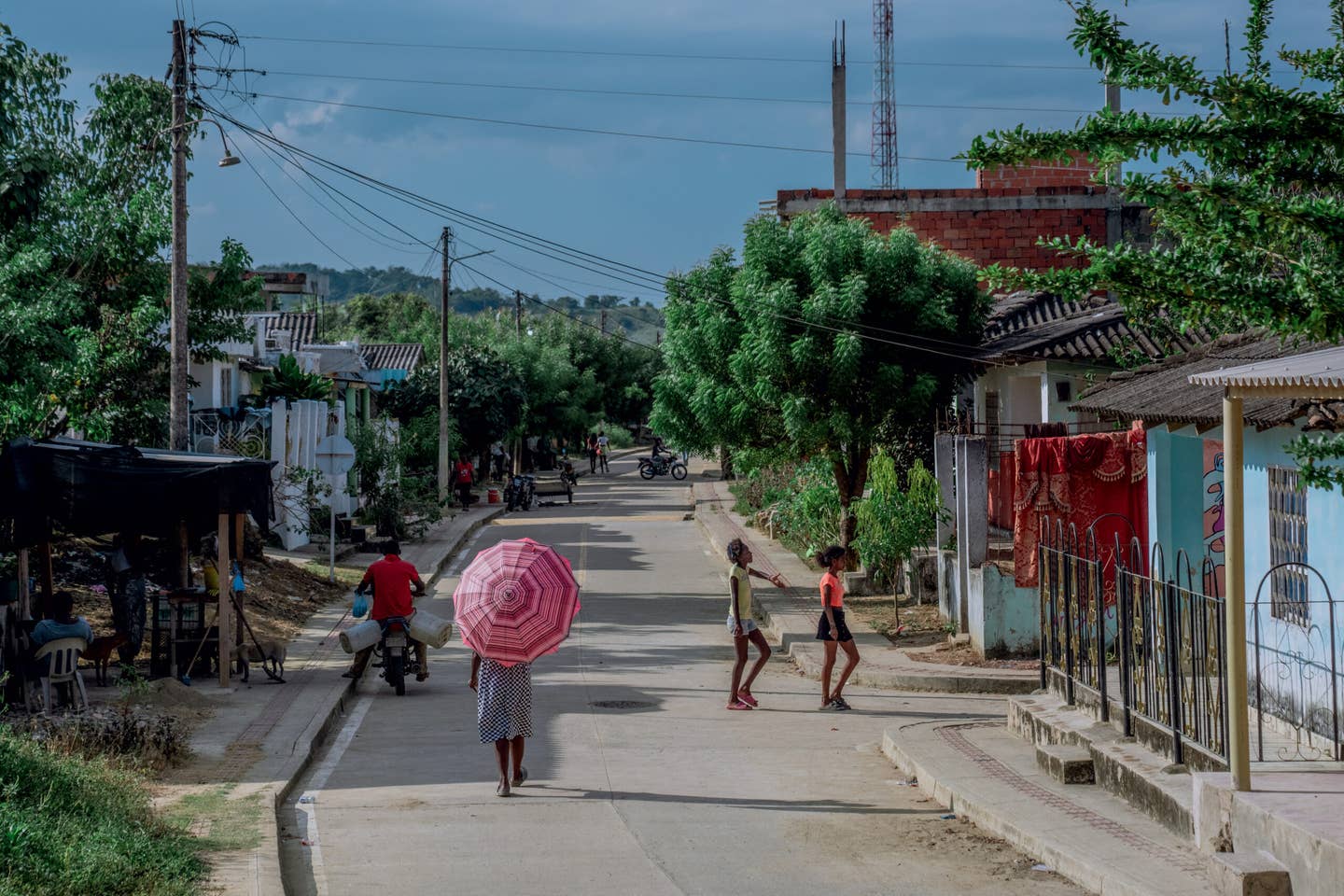
“Every little thing we do—how we learn to use our surroundings, how we put together the vegetation that develop close by, the best way we put together fish, the best way we put together our drugs—it’s a results of our heritage from the African individuals,” says Víctor Simarra Reyes, a chef, educator, and an advocate for Palenque delight.
Just some blocks away from Biohó’s statue, at a good friend’s residence, Reyes has ready an beautiful meal for us. Quiet and bored with small discuss, Reyes focuses on getting the meals to our desk, which is roofed in vivid, pear-green banana leaves. Inside just some minutes, there are beneficiant helpings of meat, rice, stews, and sauces. Reyes throws his towel over his shoulder, and gestures together with his fingers in urgency.
“Eat,” he says. And so we do. I take handfuls of hen and cassava in a frivolously candy coconut sauce, served with a thick pink bean pottage. All of us take more and more larger bites of his bollo de plátano con cerdo asado, a conventional plantain bun cooked with roasted pork; and his cabeza de gato, a smashed inexperienced plantain snack he’d determined that day to mix with a form of contemporary cheese. We get pleasure from our share of sweets throughout a powerful dessert unfold: alegría, just like the palenqueras served, candy and aromatic with coconut, and enyucado, a cassava cake enlivened with star anise.
It’s a fabulous feast that clearly has required hours of cooking. Reyes explains that he selected to share these dishes not regardless of their problem, however due to it. “We wished to point out that this cooking isn’t easy,” Reyes says. “It requires a number of time, and a number of effort.” This training is a component of a bigger motion that Reyes has lengthy championed—working with Palenque cooks and cooks to protect and create from their native foodways, slightly than have their meals expressed by non-Black cooks and writers. He has turn out to be a voice for sharing what he describes as Palenque’s “rustic” eating with the world, and absolutely and proudly communicates the integral position African roots play of their meals.
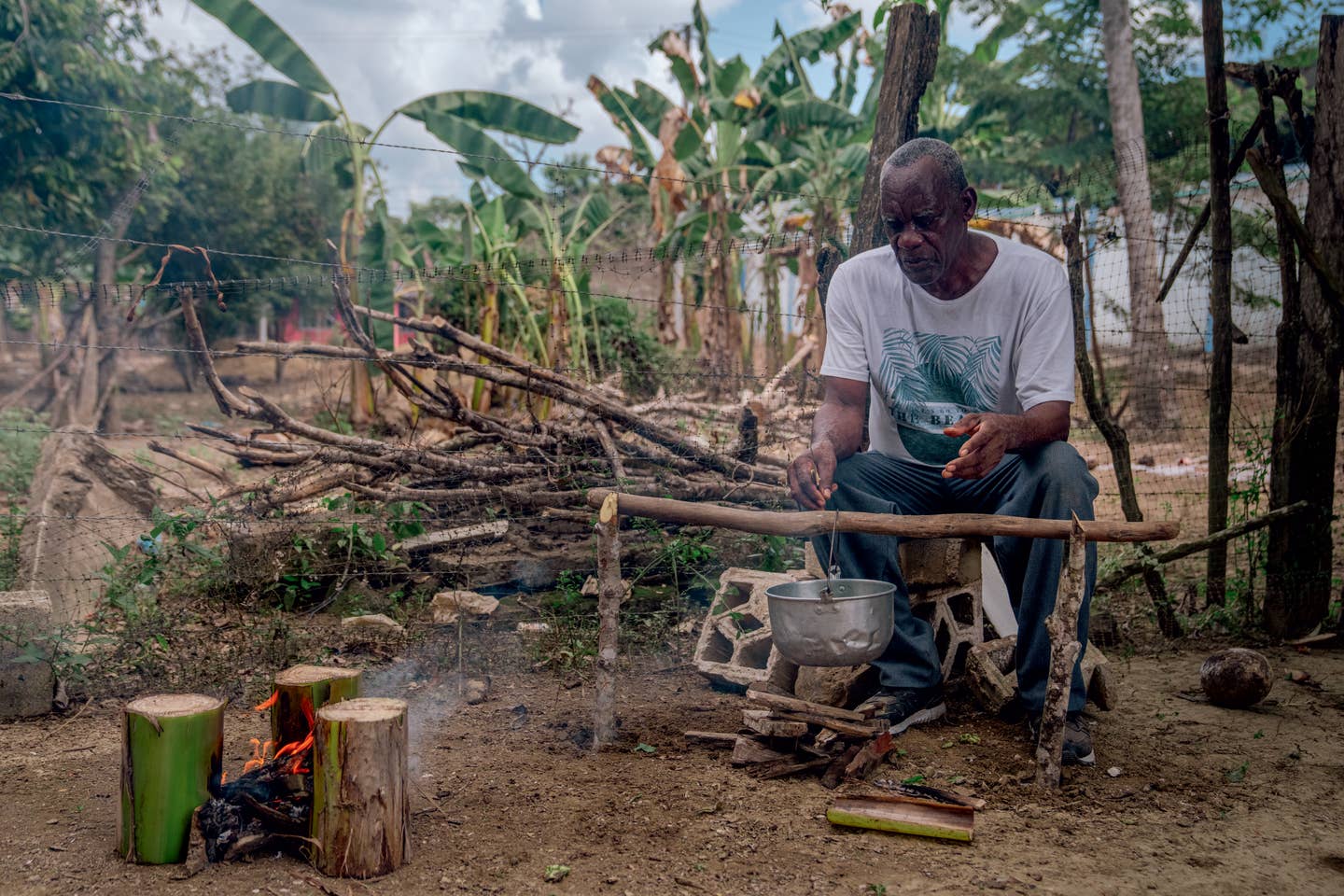
Reyes’ work is documented within the cookbook Kumina ri Palenge pa tó Paraje, or “Palenquero Cooking for the World,” in English: a neighborhood collaboration he spearheaded to doc recipes spanning greater than 300 years of the city’s historical past. He and his spouse, Ruth Reyes, consulted greater than 600 native residence cooks, accumulating recipes and deciding on an elite group of recipe writers and testers. “We had been the primary ones to undergo the recipes, gather them, and put them on paper so we don’t let these traditions die,” Reyes says. Collectively, they produced the primary cookbook documenting Palenque’s delicacies, which went on to obtain the “Greatest Cookbook within the World” award on the 2014 Gourmand World Cookbook awards in Beijing.
Earlier than Reyes was a chef, he was a younger African Colombian boy, serving to his grandmother along with her sancocho trifásico, a three-meat soup that usually took a full day to organize. Typically served with cassava and rice, each of which Reyes says are mainstays of the native food regimen, the soup is a peppery, fragrant, and deeply soothing dish that has endured in residence kitchens. He recollects the once-ubiquitous (and labor-intensive) bollo de maíz, a fried, roasted corn snack, which he laments had disappeared from many Palenque houses by the point he was a younger man.
I get the prospect to expertise a few of this labor with Antonia Cassiani, a Palenque native and native tour information who goes by the identify “Samba.” Gripping a large pestle together with one other associate, we rhythmically beat the corn as our group sings songs to encourage us. The method is harking back to an everlasting observe wherein girls pile rice, grains, or corn into a large wood mortar and use their bodily power to do what locals name, “pillaring the corn.” That’s, grinding the elements whereas singing songs that illustrate their goals, considerations, and on a regular basis ideas. “This kitchen instrument was the inventive engine of many ladies who poured their concepts into it, and sang their sorrows to it,” says Reyes. “It’s one other instance of simply how necessary Black girls are to our neighborhood, and to our meals.”

When Reyes first began cooking, he picked up historical past and recipes orally; it wasn’t till later in his life that he realized to learn and write so he might document and share his data. When he graduated from elementary faculty on the age of fifty, he instantly put his new abilities to make use of: As a part of his commencement necessities, which inspired college students to do one thing impactful for the neighborhood, he authored the cookbook. The purpose for many, it appears, in Palenque, is to not climb and climb and climb chasing trivial achievements, however slightly to salvage, to avoid wasting, and to safe.
“I take delight in my position because the consultant of our traditions and our delicacies,” says Reyes. “In any case these years of working, that’s what I cherish most.”
Palenque hasn’t all the time been so snug with sharing its tradition: The legacy of colonization has made many in the neighborhood understandably proof against exterior affect. Even Ruth, Reyes’ spouse, was thought of suspicious when she first moved to Palenque from the same small Colombian city of San Antonio. An outsider, then, was all the time an outsider. However Reyes and his friends are studying to embrace opening their doorways to different descendants of the African diaspora.
“I’m very joyful that the neighborhood of Palenque could be very open,” Reyes says of the shift. “My coronary heart warms each time I see 80 buses filled with vacationers. Palenqueros are welcoming them and are displaying their traditions, their delicacies, and their tradition. They’re taking delight in it and displaying it to the world.”
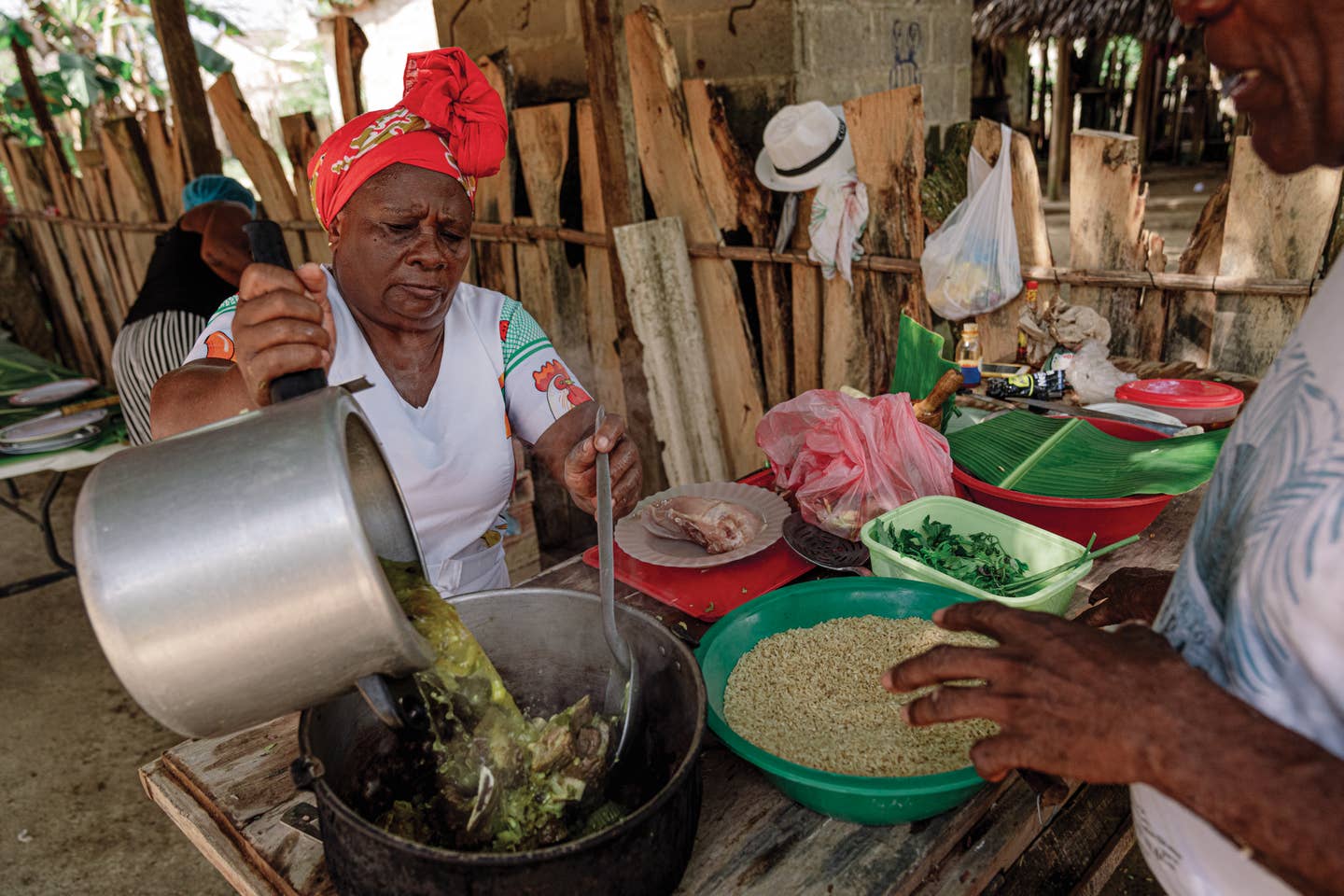
Reyes and his friends acknowledge a solidarity amongst curious Black vacationers who come to Palenque. It is perhaps for the meals, the music, or just the proof that all of us have a shared residence, a shared origin story. The canvases on which we had been compelled to design a life reveal a com – mon seek for freedom—maybe most evidenced in our capability to outlive and thrive in several components of the world.
Previous to my departure, I go to Biohó’s statue as soon as once more, his face charged and craving to be free. My family, like many others, had been enslaved on American coasts within the Deep South, and although Emancipation supposedly gave us freedom, it could be one other century earlier than my individuals gained equal rights in america. The hunt for Black liberation might be devastating. Our tradition, heritage, and contributions are nonetheless usually misrepresented or underneath – appreciated. We lose our heroes to state-sanctioned violence, are lectured about our conduct, and are chastised for demanding a society the place fairness and decency are major values.
“There’s a phrase that resonates right here,” Pedro Mosqueda, a chef and scholar of Reyes, tells me. “I’m pleased, and it isn’t due to the music, however due to the chief who gave me my freedom.” As I gaze upon the city, full of Afro-Colombians dancing, enjoying soccer, and lounging out underneath the dazzling sundown, I keep in mind that freedom is so usually one thing we discover inside ourselves.


